The Latest GTN News
Keep an eye on this page for the latest news around the GTN. New tutorials, GTN features, upcoming training events, and much much more!

Many analyses in Galaxy require small data manipulations in between tools as a sort of “glue” between analysis steps. For example, you may need to change the file format, re-order columns in a table, replace certain values, or perform some filtering operation, before you can proceed to the next step of your analysis. Galaxy offers a wide range of tools that can perform such generic data manipulation tasks, and mastering these types of operations in Galaxy can help you streamline your analysis and get the most out of Galaxy.
Full Story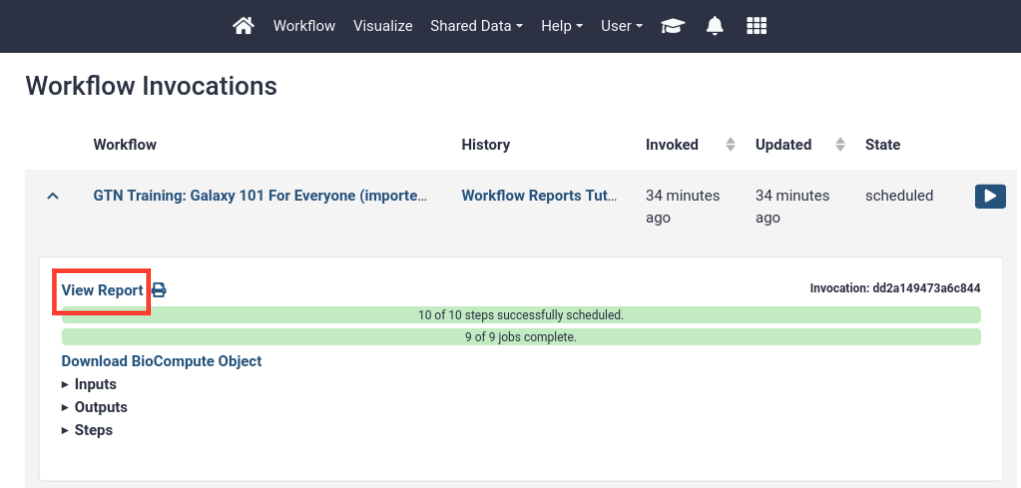
Workflow reports are a great Galaxy feature that enable you to define summary reports for any workflow to display the most important results in a single view. This tutorial will guide you through the basics of viewing, customizing, and sharing such workflow reports!
Full Story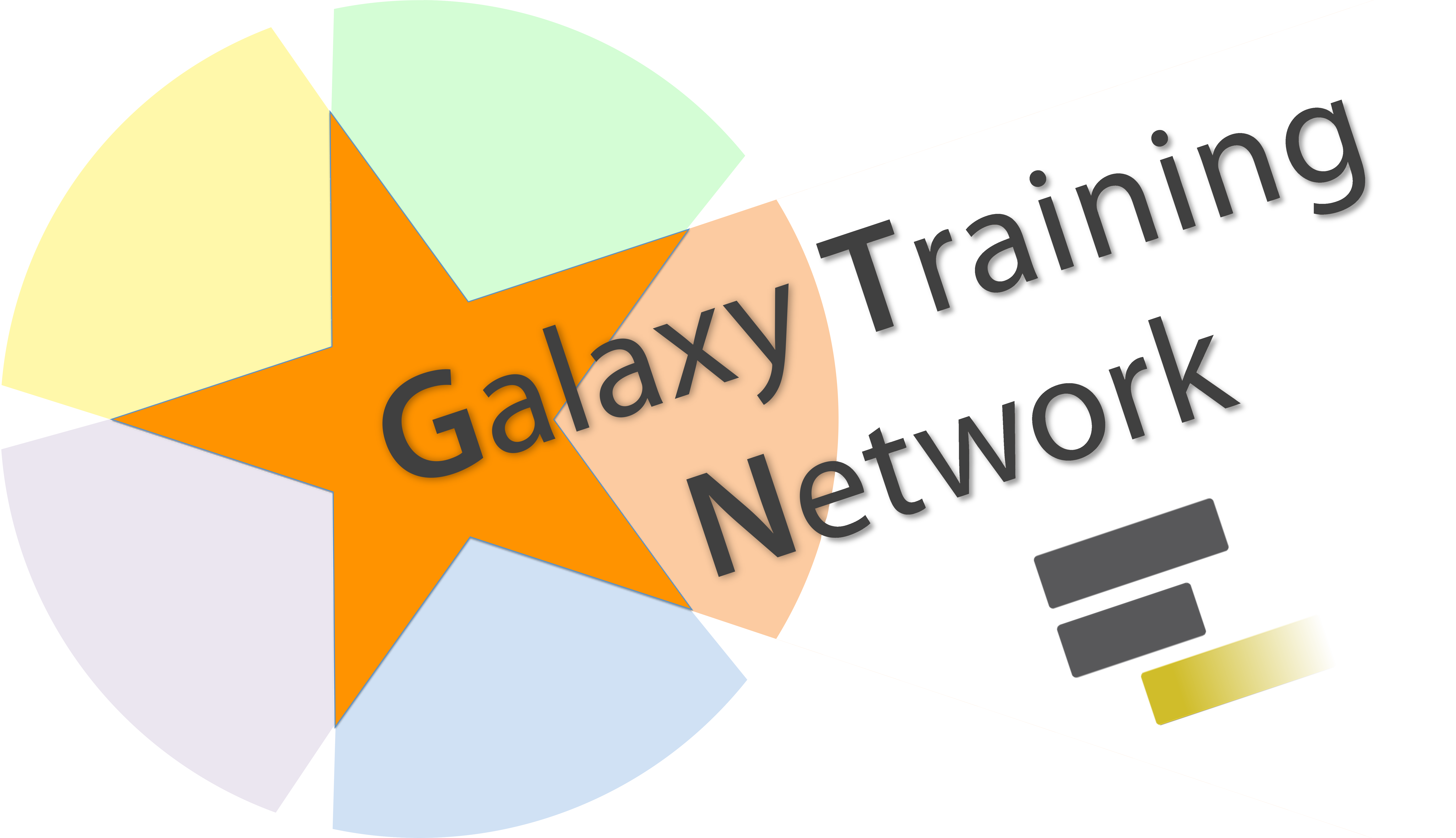
Within the GTN we have had schemas for the various metadata we keep for a long time. It helps us automatically check community contributions to ensure they conform to all of the GTN standards, and will work correctly in our environment.
Full Story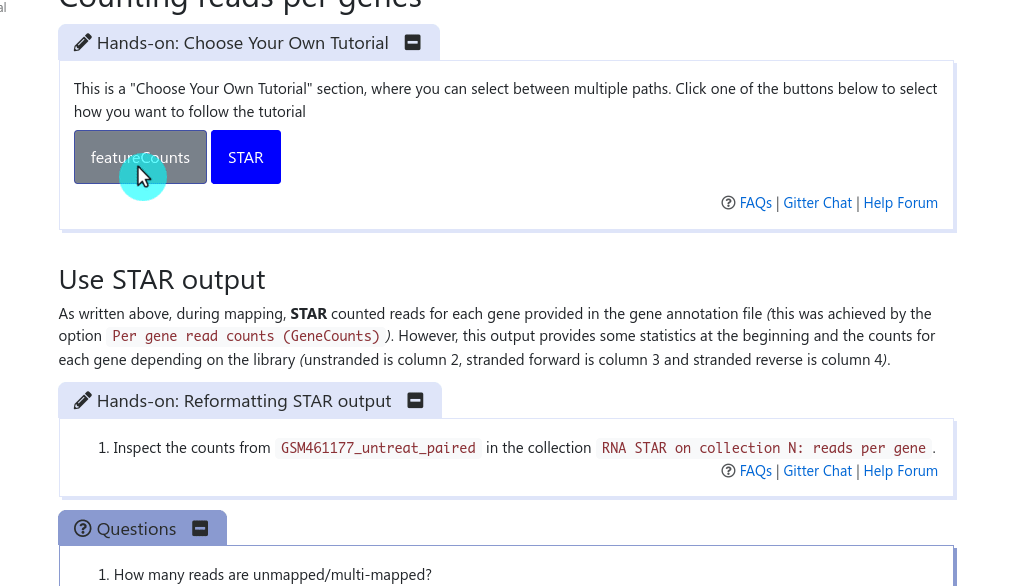
It has been a long discussed feature within the GTN Tutorial Author Community: how can we provide trainees with choice in their tutorials, and how can we as trainers not duplicate large tutorials just to show a slightly different path at one point?
Full Story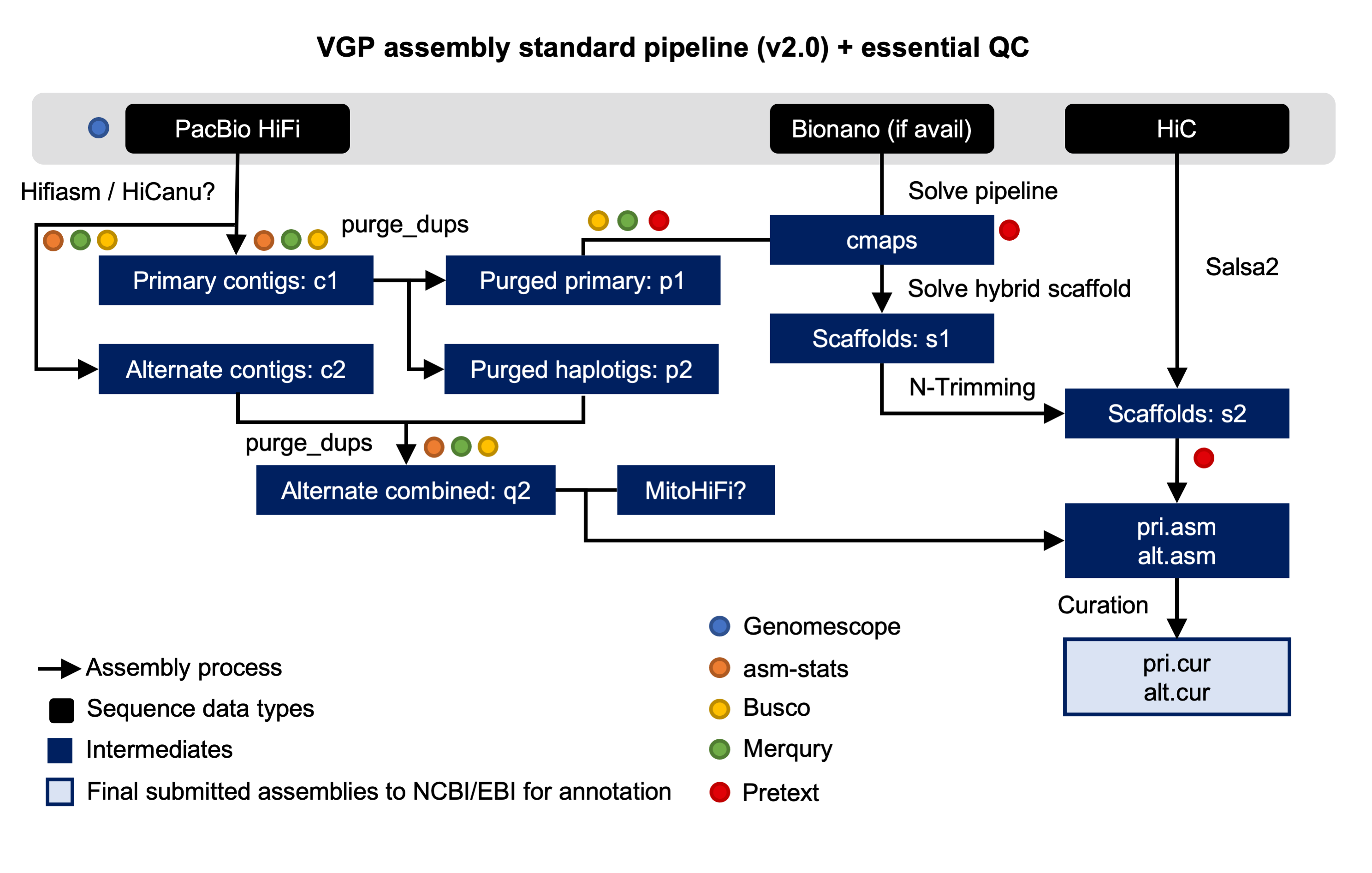
We are proud to announce that, as result of the collaboration with the Vertebrate Genomes Project (VGP), a new training describing the VGP assembly pipeline (fig. 1) is now available in the Galaxy Training Network. The Vertebrate Genomes Project aims to generate high-quality, near-error-free, gap-free, chromosome-level, haplotype-phased, annotated reference genome assemblies for every vertebrate species.
Full Story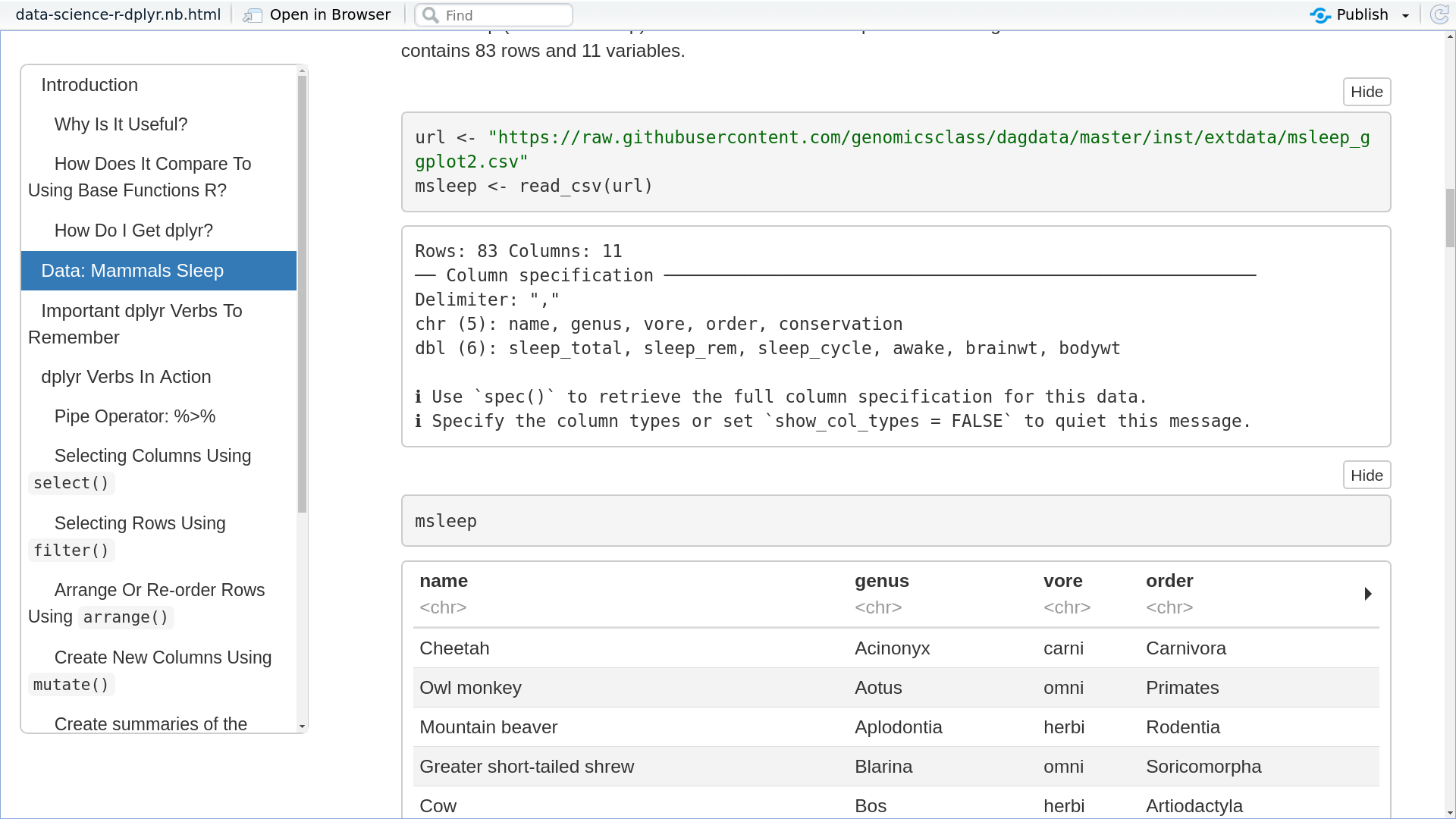
| Author(s) |
 |
Further building on the work in the automatic Jupyter Notebook, we’ve now re-written the Jupyter export to be faster, and more importantly added support for R and RMarkdown! Check out an example material. Here we take the content of the tutorial, written like normal GTN markdown, and we automatically convert it to Jupyter Notebooks and now RMarkdown documents! Check out the documentation on how to setup your tutorials to support this.
Full Story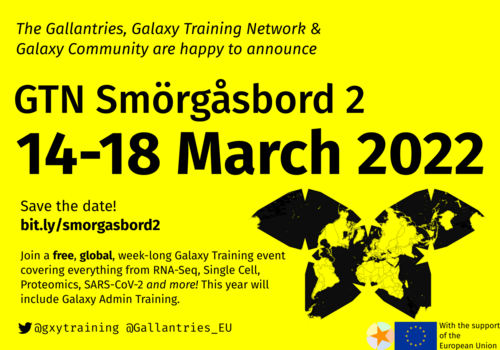

| Author(s) |
 |
The Galaxy Training Network will now support annotating Funding Agencies on training materials. This is part of our ongoing effort to better annotate how people are contributing to the GTN and recognise all of the sources of contribution.
Full Story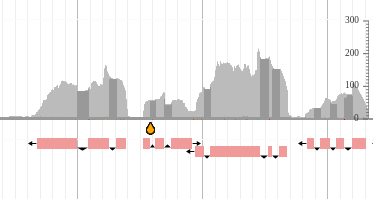
We have just finished a new collection of training material for genome assembly and annotation! You now have access to slides and tutorials, focused on the complete analysis of the genome of a fungus species (Mucor mucedo).
Full Story
The GTN does a lot of work to adhere to the best practices for FAIR training materials as set out in Garcia et al. 2020 and a lot of this work is behind-the-scenes or automatic from the infrastructure we provide, and we wanted to highlight that for educators and organisers who want to use GTN materials. This is one of the ways the GTN works to makes itself a fantastic platform training. Find out how contributing simple markdown tutorials can result in fantastically FAIR training.
Full Story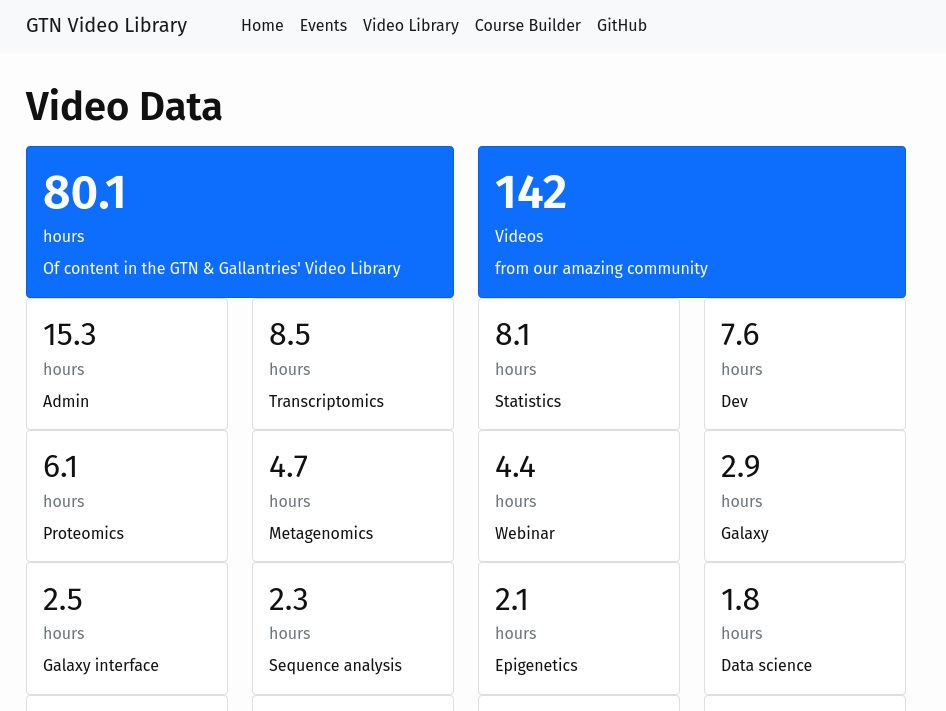
After runnning a number of virtual training events this year (e.g. Smörgåsbord, GCC2021), we now have a large collection of training videos around the GTN materials, created by this community.
Full Story
As part of the work for the Gallantries Grant, we wanted to access some of the data from the GTN in a more accessible, API based way. We are working on building a Video Library based on the wild success of our Smörgåsbord and GCC2021 events and to support that we wanted to start pulling in data from the GTN to save course authors time and effort when designing their asynchronous courses.
Full Story
Are you one of our amazing GTN Contributors? Were you ever bothered by how slow it was to build the site locally? This is now fixed completely! We have replaced one of the slowest steps of the GTN’s build process and rewritten it ourselves to be more performant.
Full Story
As part of our work under the Gallantries Grant we are establishing a new topic within the GTN specifically focused on Data Science skills. This topic will include tutorials covering things such as:
Full Story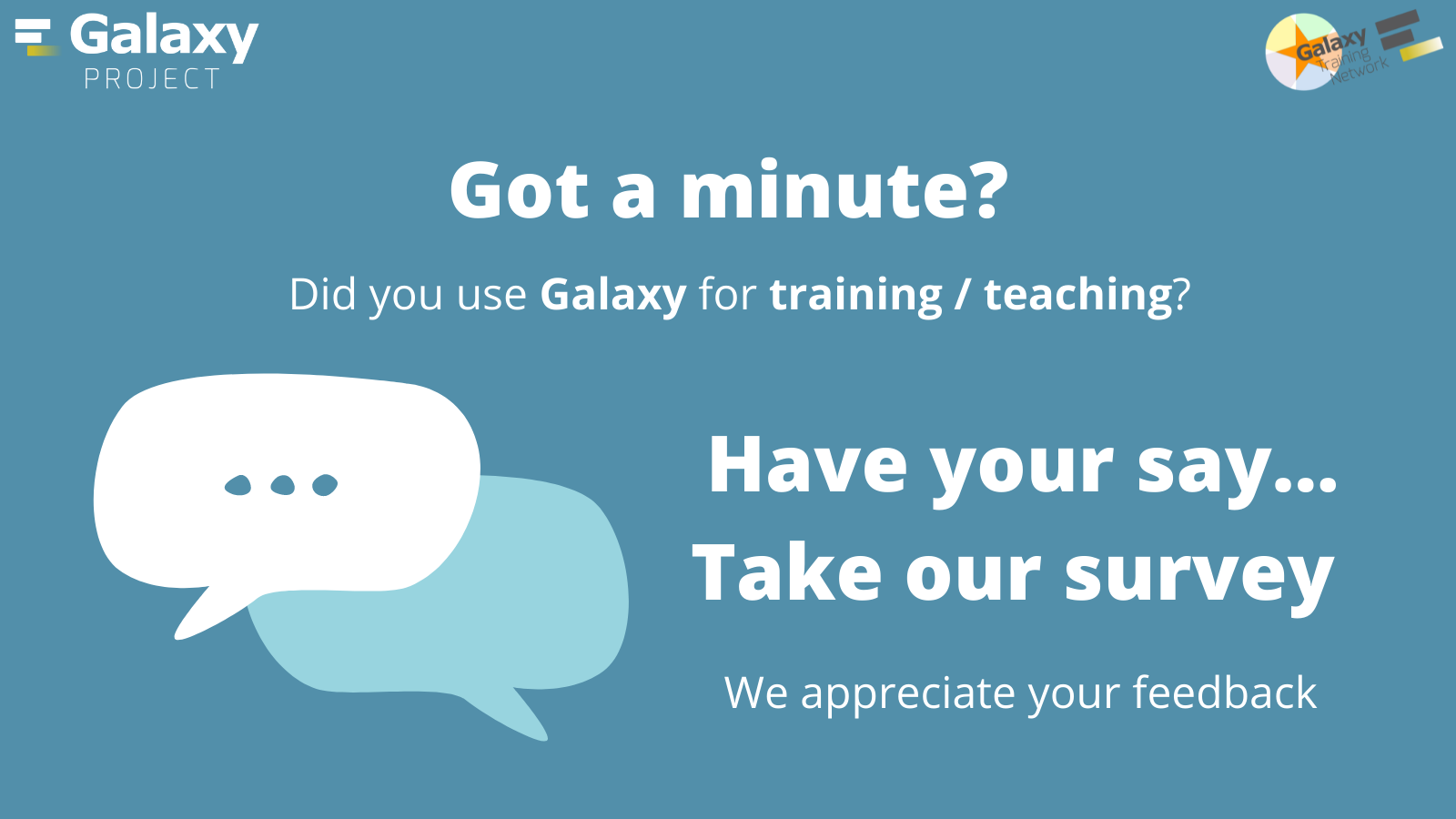
Do you use Galaxy for Training? Have your say! Please take a few minutes to let us know about your training experiences.
Full Story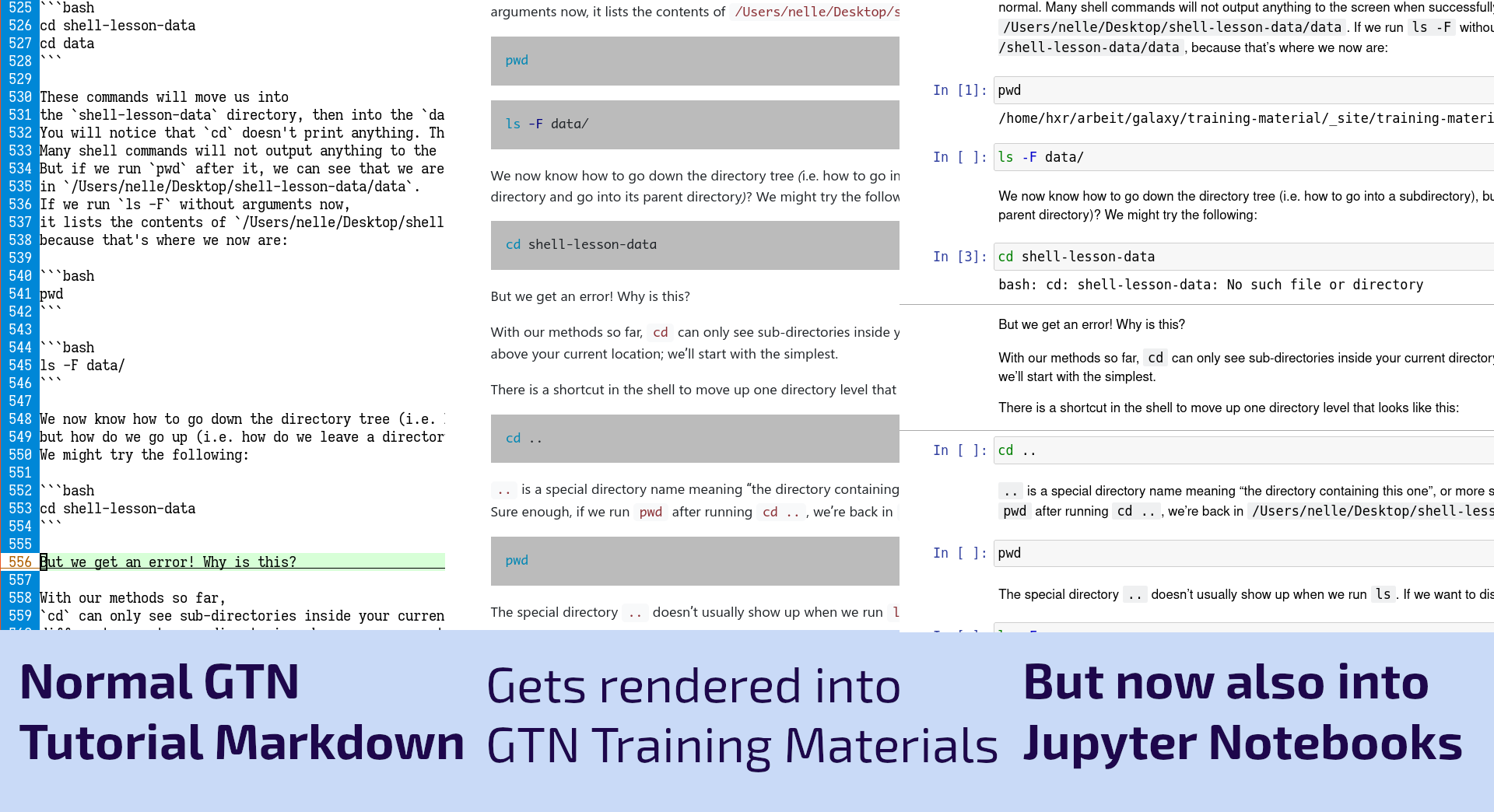
As part of the work for the Gallantries Grant, we found ourselves wanting to teach a number of non-Galaxy tutorials on topics such as Python, Bash, SQL, and Git. Writing the tutorials was always a bit awkward as you would spend a lot of time writing code blocks that would be copied and pasted by students into a terminal. We thought we could do better than that, so we decided we would try to convert these to Jupyter Notebooks where the students could read the training materials and simultaneously execute the code cells directly there with the text! This worked fantastically and now we’ve built this feature into the GTN to make it easier to run all of the coding tutorials.
Full Story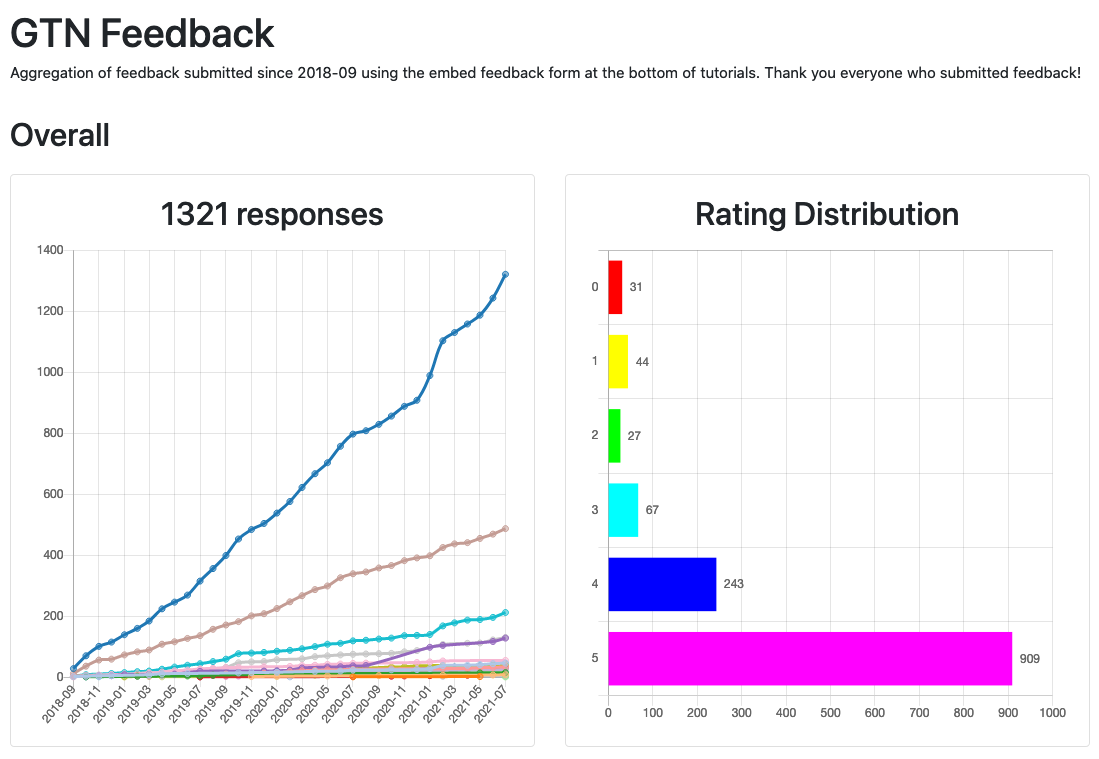
As you have probably already seen, a feedback form is embedded on the bottom of each tutorial.
Full Story

Effectively monitoring global infectious disease crises, such as the COVID-19 pandemic, requires capacity to generate and analyze large volumes of sequencing data in near real time. These data have proven essential for monitoring the emergence and spread of new variants, and for understanding the evolutionary dynamics of the virus.
Full Story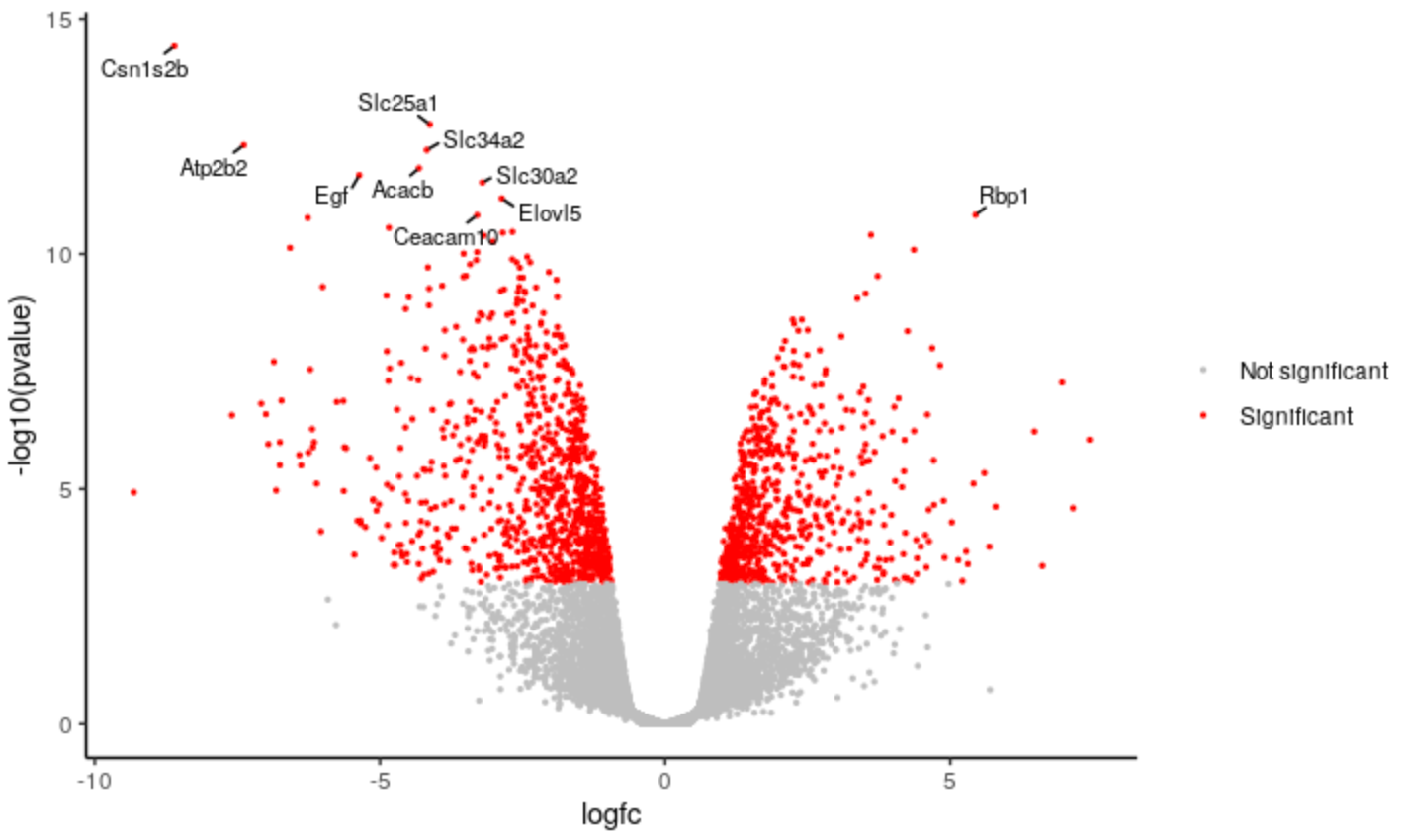
The Volcano plot tutorial introduced volcano plots and showed how they can be easily generated with the Galaxy Volcano plot tool. This new tutorial shows how you can customise a plot using the R script output from the tool and RStudio in Galaxy. A short video for the tutorial is also available on YouTube, created for the GCC2021 Training week. Happy plotting!
Full Story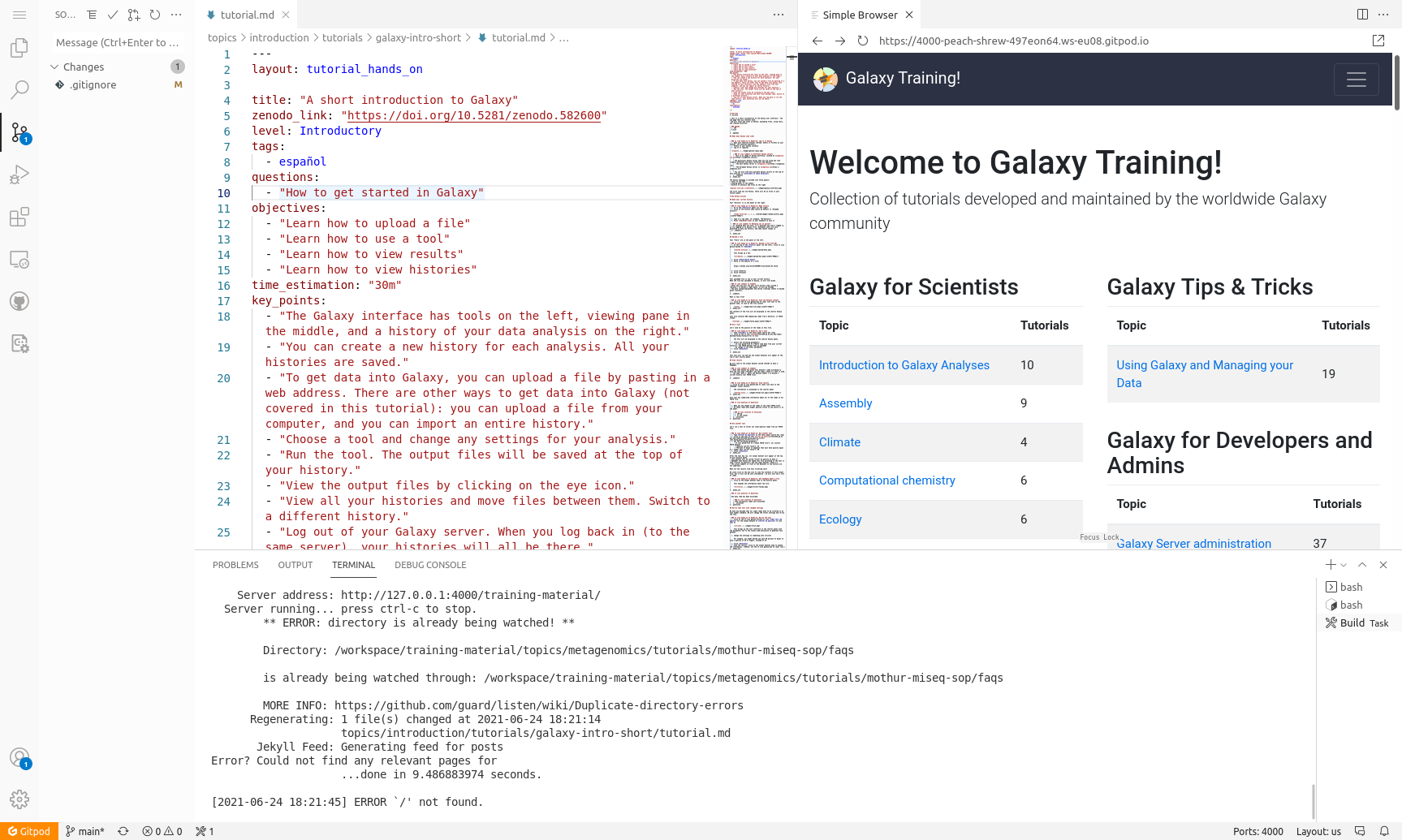
Want to contribute to the GTN without installing anything on your own computer? GitPod provides an online workspace for editing the GTN tutorials, and showing a live preview of the GTN website with your changes. This tutorial shows you how to set up GitPod, how to use it to get a live preview of the GTN website, and how to save any changes you make back to your GitHub fork. This makes it easier than ever to contribute to the GTN!
Full Story
After two years, the Galaxy Genome Annotation team has finally finished their much awaited tutorial on doing Genome Annotation in Galaxy! Genome annotation is a time consuming and largely manual process as it requires the synthesis of a significant amount of varied information to make inferences, a process tha cannot be accomplished without an interactive editor. To support this, Apollo was deployed on UseGalaxy.eu. Over the past two years the GGA project has pushed forward apollo and tooling around it, and it finally culminates in this look at how to annotated your genomes in Apollo.
Full Story
Did you ever start teaching a GTN tutorial, only to realise something changed recently? Oh no! A while ago the GTN created an Archive to address just this concern. On every tag, we’d build a copy of the website which we would place online and never touch again. This way we’d have permanent online copies so that if someone needed to go back to an older version of the GTN, they could.
Full Story
The first of the developer tutorials for GCC2021 is live, first time contributor Erik Schill has produced a fantastic tutorial covering how to develop new functions in BioBlend for new APIs in Galaxy. Many thanks to Simon Bray for editing!
Full Story
Thanks to the great tutorial developed by first time contributor Erik Schill and edited by Simon Bray , we noticed that they defined a number of abbreviations and re-used those throughout their tutorial.
Full Story
¡El primer tutorial en español ya está disponible! Galaxy siempre ha tenido tutoriales traducidos automáticamente mediante Google-Translate, ahora nos estamos embarcando en un nuevo proyecto para estudiar la experiencia de aprendizaje con tutoriales en bioinformática traducidos por humanos. Nuestro objetivo es crear un paquete de tutoriales para el análisis de datos single-cell (célula única) en primera instancia, con el fin de estudiar su uso y utilidad en un taller para hablantes nativos de español. Agradecemos enormemente a las nuevas participantes Patricia Carvajal López y Alejandra Escobar-Zepeda (EMBL-EBI) así como a las miembros existentes de GTN Beatriz Serrano-Solano (University of Freiburg), Saskia Hiltemann & Helena Rasche (Erasmus-MC), por su arduo trabajo en este proyecto de traducción y mantenimiento y, por supuesto, a Wendi Bacon (The Open University/EBI) como líder de proyecto.
Full Story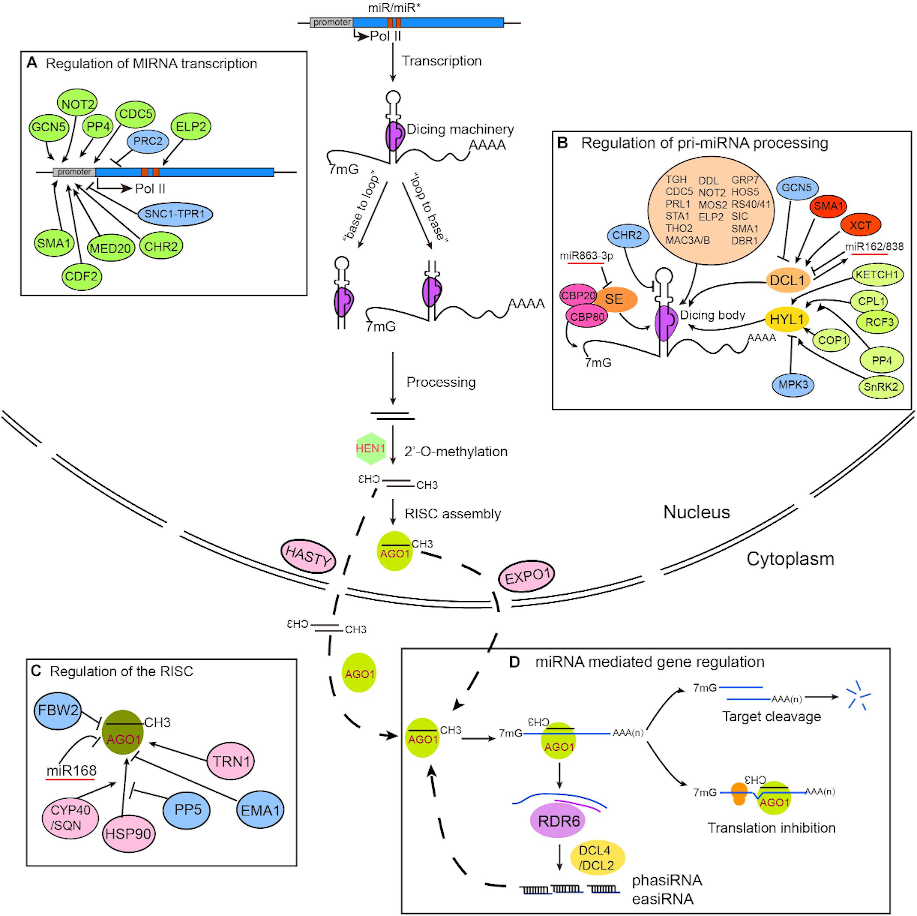
Plant lovers are in luck! A new tutorial on this fascinating kingdom has been added to the GTN. It details the necessary steps to identify potential targets of brassinosteroid-induced miRNAs. Brassinosteroids are phytohormones that have the ability to stimulate plant growth and confer resistance against abiotic and biotic stresses. These characteristics have led to great interest in the field of biotechnology due to its potential for increasing agricultural productivity.
Full Story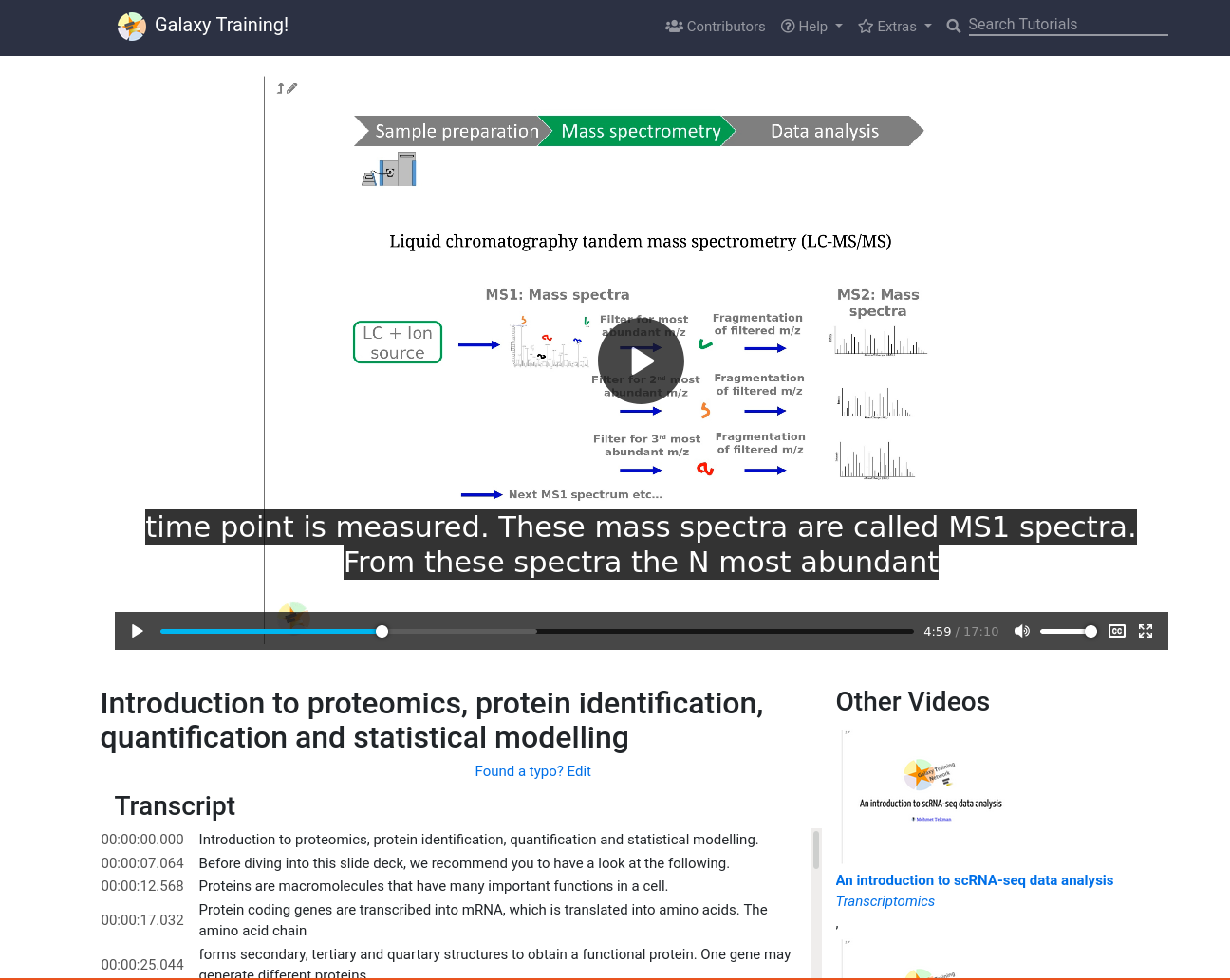
One of our contributors ( Mehmet Tekman ) found himself wanting to link to a specific time point in a video. We said “Wow, what a fantastic idea!” and then we implemented it. To support that we developed a very simple standalone video player page where you can view the GTN videos and browse through our catalog. It features the full transcript on the left, some suggested videos on the right, and a very standard <video> player.
Full Story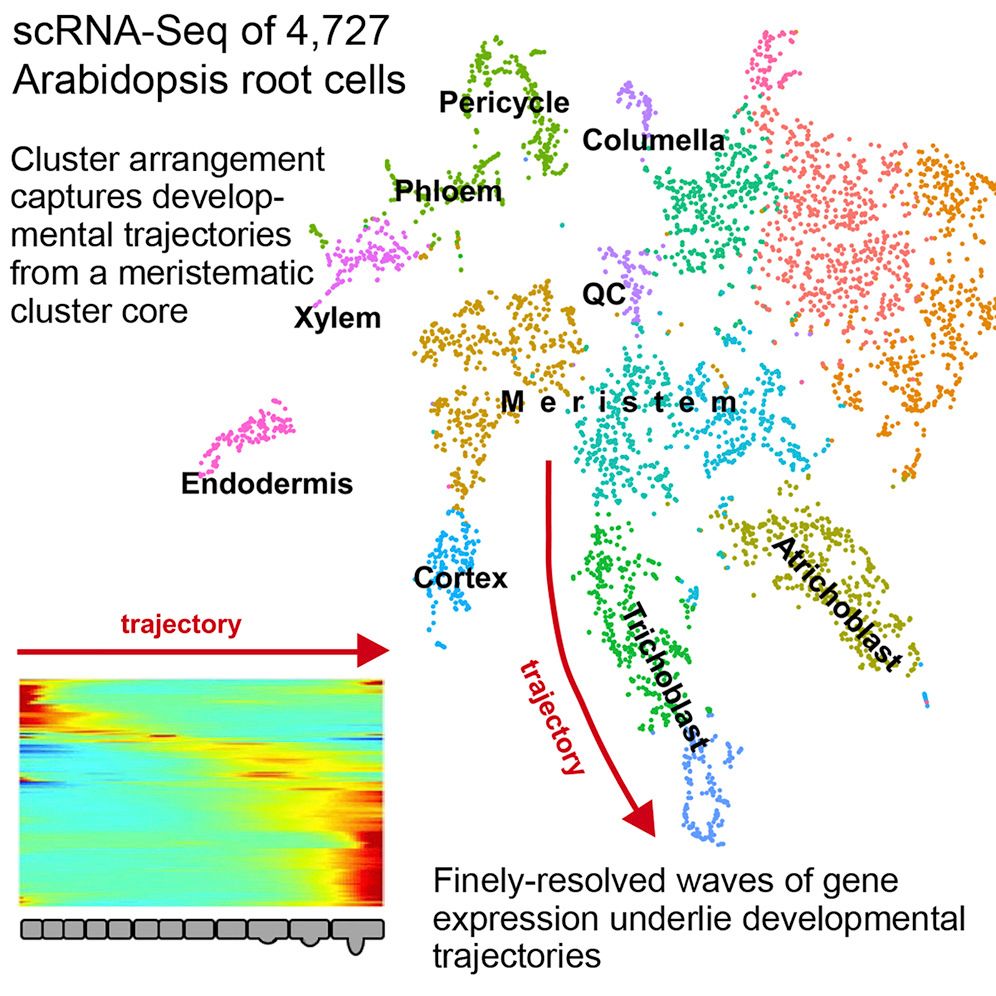
Single cell RNA-seq analysis is a cornerstone of developmental research and provides a great level of detail in understanding the underlying dynamic processes within tissues. In the context of plants, this highlights some of the key differentiation pathways that root cells undergo.
Full Story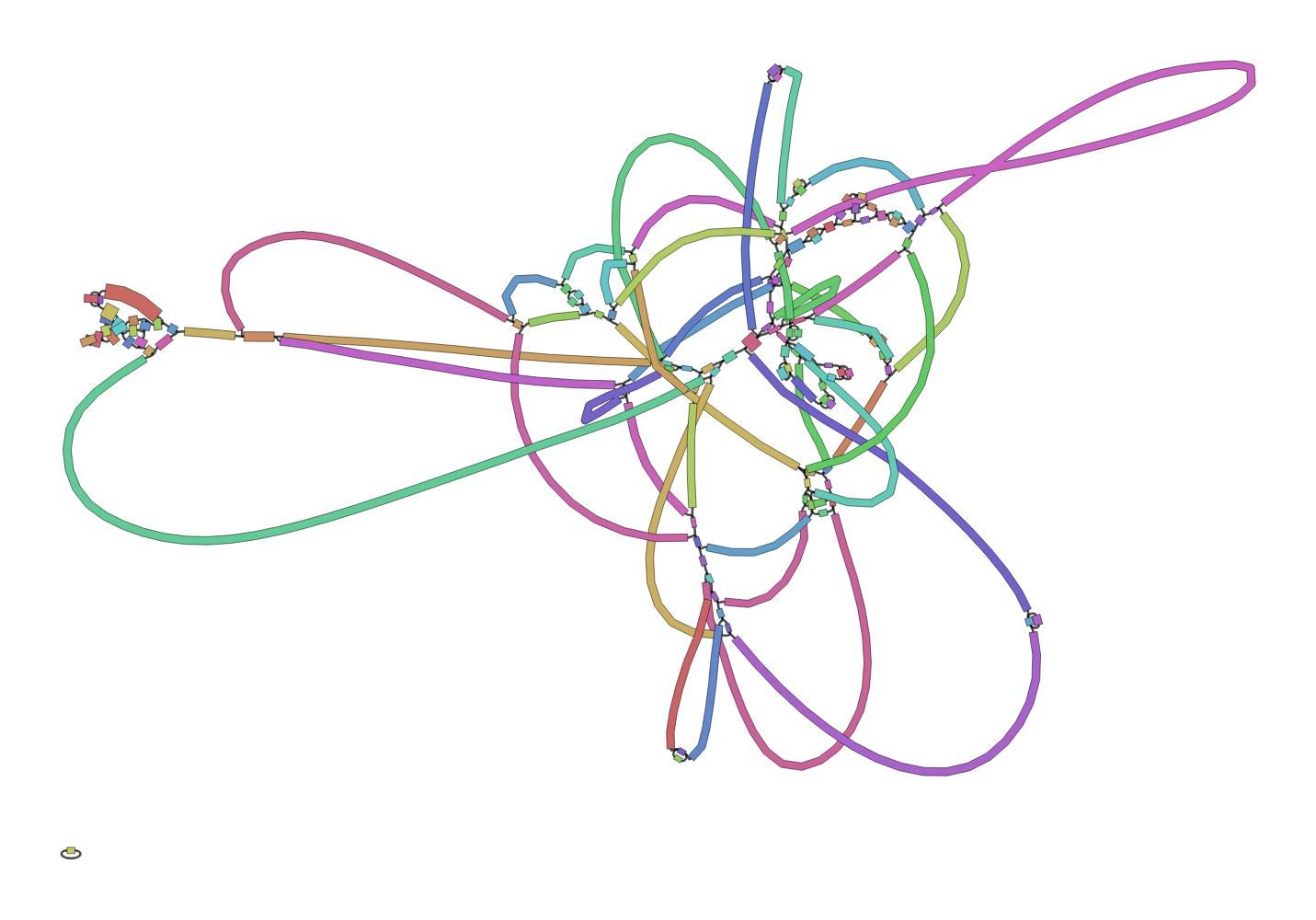
Two new assembly tutorials have been added to the GTN! These tutorials walk you through the process of assembling MRSA strains from real-world datasets. MRSA stands for “Methicillin- resistant Staphylococcus aureus, it is resistance to several antibiotics and is a common source of hospital-acquired infections and outbreaks. In this tutorial you will assess the quality of your data, perform an assembly and assess its quality, analyze your data for the presence of antimicrobial resistance (AMR) genes, and annotate the genome using Prokka and JBrowse.
Full Story
Snippets have received an major overhaul! Snippets/FAQs are small reusable bits of training, often answering a single question. In addition to the general Galaxy snippets, we now also support topic-level and tutorial-level FAQs. This will allow contributors to add common questions and answers to their tutorials, which not only can be included in the tutorial text itself, but are also used to autogenerate an FAQ page for the tutorial or topic listing all common questions (and answers).This will be useful both to participants following tutorials via self-study, and also to instructors preparing for a training event.
Full StoryMost biological processes are dynamic and observing them over time can provide valuable insights. Combining fluorescent markers with time-lapse imaging is a common approach to collect data on dynamic cellular processes such as cell division. However, automated time-lapse imaging can produce large amounts of data that can be challenging to process. One of these challenges is the tracking of individual objects as it is often impossible to manually follow a large number of objects over many time points.
Full Story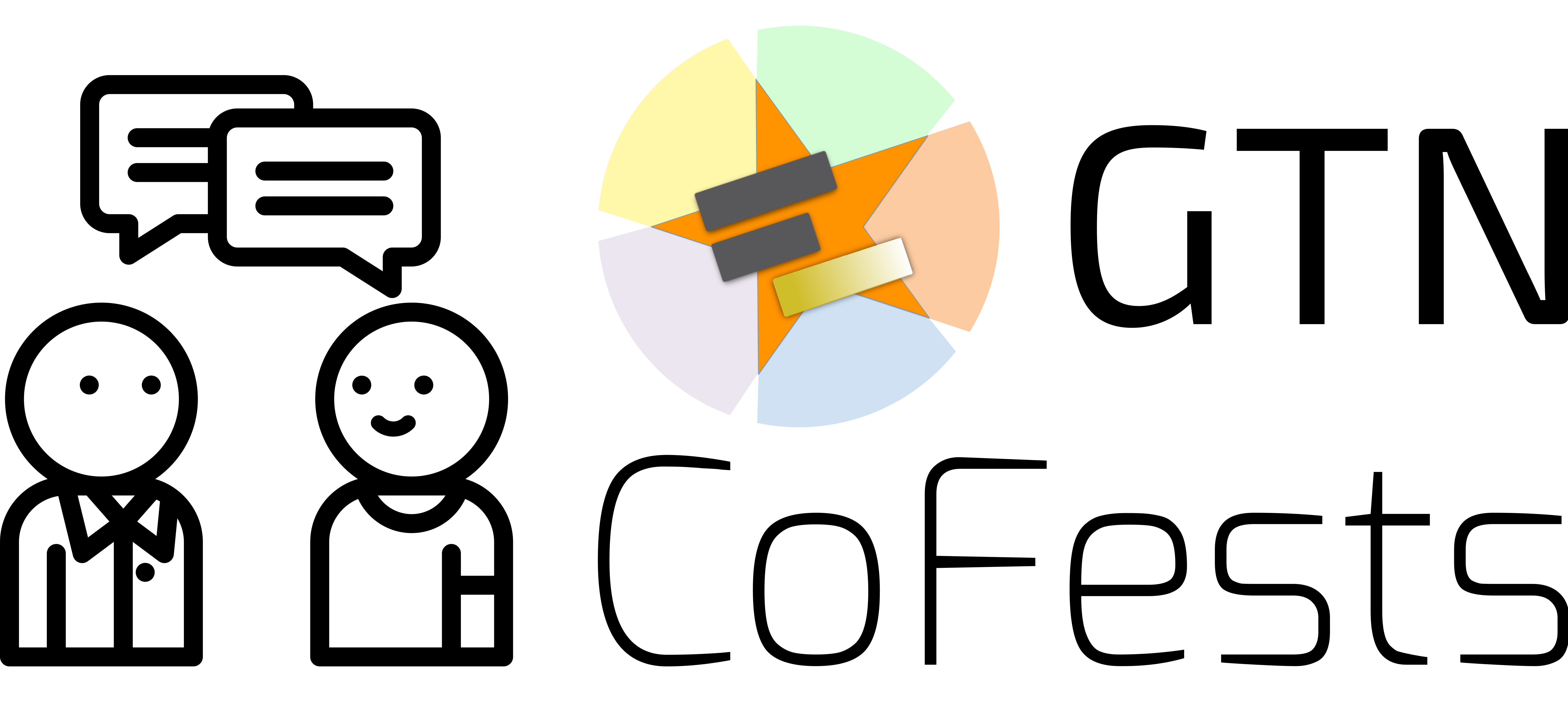
Every 3 months we organise one day dedicated to the GTN community! Thursday, May 20th is the next GTN CoFest. We will be working on the training materials, have discussions with the global Galaxy traning community. Do you teach with Galaxy? Want to learn how to add your tutorial to the GTN? New to the community and just want to learn more? Everybody is welcome!
Full Story

The GTN instructors community has just run the largest-ever Galaxy training event: “the GTN Smörgåsbord: A Global Galaxy Course”, co-organized with the Gallantries and the CINECA project and the Galaxy Training Network.
Full Story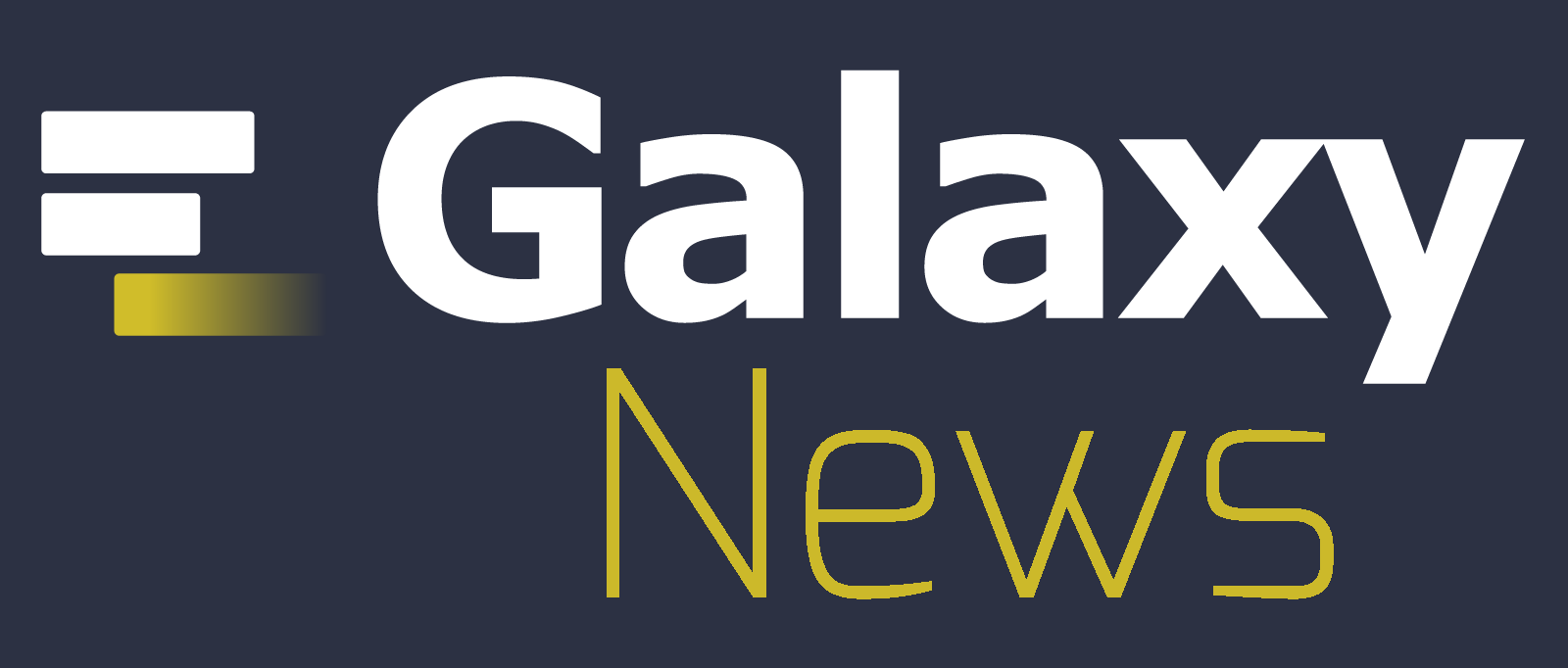
The Galaxy Team is pleased to announce the release of Galaxy 21.01! Workflows are the absolute ✨star✨, followed closely by the new Remote Files interface and much more.
Full Story
This past year has been a struggle for all of us, but one task has become apparent as one of the most time consuming portions of course preparation during a pandemic: Video Production.
Full Story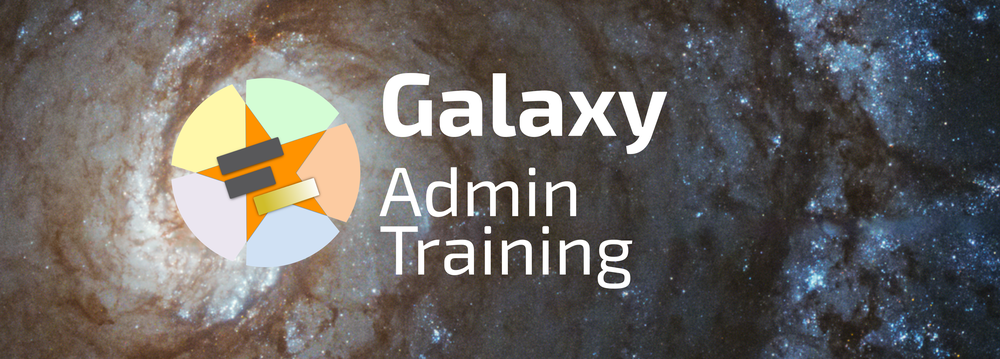
The Galaxy Admins and the GTN instructors community has just run the largest-ever Galaxy Admin training event.
Full Story